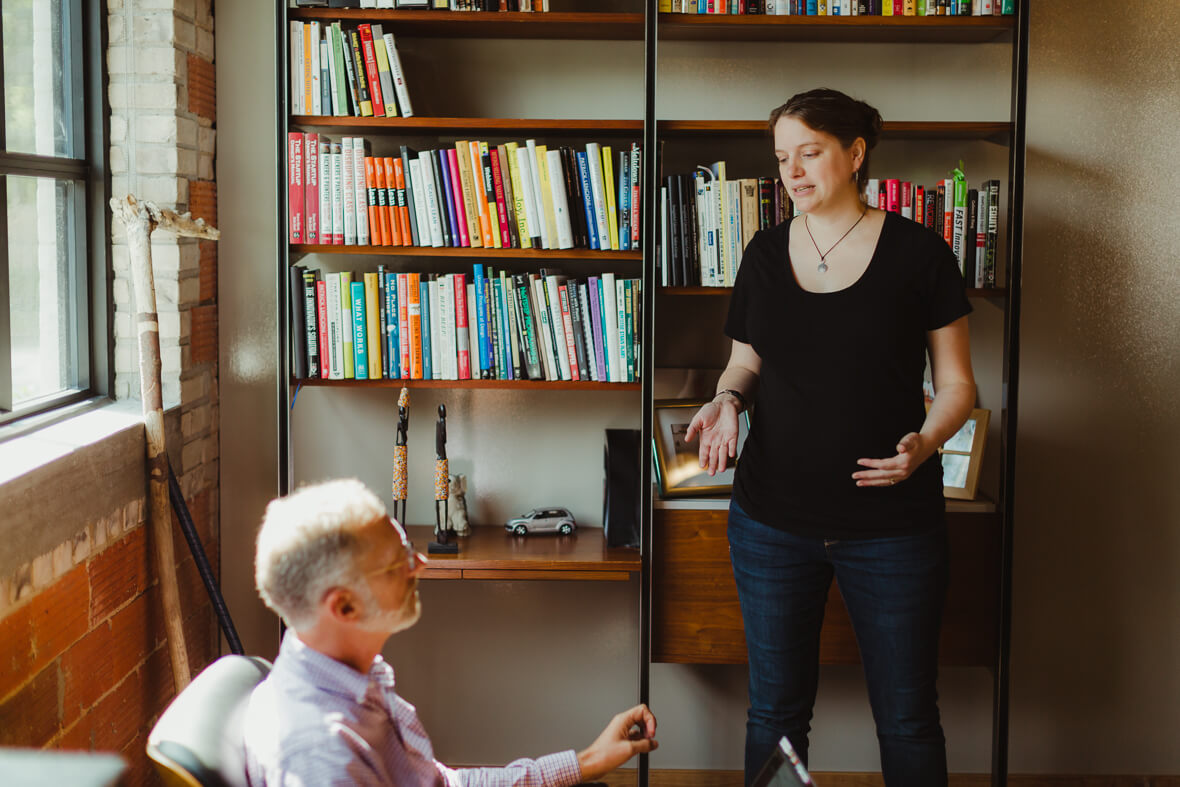Katty Kay & Claire Shipman, authors of The Confidence Code, were inspired to tackle the topic of women and confidence because women everywhere seem to have less confidence than men.
We see it everywhere: Bright women with ideas to contribute who don’t raise their hands in meetings. Passionate women who would make excellent leaders, but don’t feel comfortable asking for votes or raising campaign money. Conscientious mothers who’d rather someone else become president of the PTA while they work behind the scenes. Why is it that women sound less sure of ourselves when we know we are right than men sound when they think they could be wrong?
In exploring this question, the authors both contribute stories and academic research they uncovered on the topic of women and confidence.
The Confidence Gap is Real
The early chapters of the book deal with understanding and defining the confidence gap that exists between women and men. Is it real? If so, what does that mean? To answer those questions, the authors offer some interesting (and somewhat depressing) research:
- Citing research by Linda Babcock at Carnegie Mellon University, the authors note that men initiate salary negotiations four times as often as women, and women ask for 30 percent less than men do.
- A 2011 study by the Institute of Leadership and Management explored how confident women feel in their professions. In this study, half of the women reported feelings of self-doubt about their performance and careers, while less than a third of male respondents reported self-doubt.
- A Princeton research team measured how much less women talk in meetings. The study found that women, when in the minority, spoke 75 percent less than men did.
- According to research by Columbia Business School, on average, men rate their performance 30% better than it actually is, which may reveal a tendency toward overconfidence.
Why does this confidence gap matter? Kay and Shipman argue that it’s fundamental to why women are still underrepresented in positions of power and leadership:
Underqualified and underprepared men don’t think twice about leaning in. Overqualified and overprepared, too many women still hold back. And the confidence gap is an additional lens through which to consider why it is women don’t lean in. Even when we are prepared to tolerate the personal disruption that comes with aiming high, even when we have plenty of ambition, we fundamentally doubt ourselves. – The Confidence Code, page 21
Our Experiences with the Confidence Gap
Our book club members shared their own observations about how confidence manifests differently in men and women and how it affects our life experiences.
In my own early career, the confidence gap had a huge impact. Lacking any peers or confident role models due to the low numbers of women in computing, I changed majors after a year of studying computer science. I was great at programming, and more importantly, I enjoyed it. But stereotype threat got to me, and I didn’t have the confidence to push through. Fortunately, I made my way into the software industry via a different path.
Others from our book club shared similar experiences, both in school and in the workplace.
Taking introductory computer science classes in college as a woman felt like more of a challenge than what my male classmates had to experience. Unlike the men, it felt we had to prove that we belonged in the classes. Because of this, most of the top students in my program were women who had worked harder for their entire college careers because they set themselves up for success in their intro classes. – Molly Alger
The lack of confident woman role models in my field was hard for me to overcome. I couldn’t imitate the confidence that I saw in men–it felt like faking to me. But for a long time, I only saw examples of confidence that seemed like overconfidence. And why would I want to be like that? I couldn’t see humility and confidence coexisting until I found myself surrounded by confident women at Atomic. – Rachael McQuater
Since spending time in a professional career setting, I’ve found there have been entirely new hurdles when it comes to confidence. More specifically, it’s become a bit more difficult for me to evaluate how I’m performing when it comes to trying something new and uncertain. Grades throughout college helped me easily quantify my effort and success. Looking forward, I intend to determine the best ways to measure my success, so that I can both maintain the confidence I’ve built so far, and continue to grow my confidence in this new area of my life. – Laura Robb
I still struggle with confidence in myself and my abilities from time to time. There are times I get in my own head and tell myself that I lack the experience or I’m not doing enough to succeed. It can be difficult to overcome these feelings, but it’s something I consciously try to work on every day by improving my skill set, both technical skills and soft skills. – Molly Alger
While I think there are stereotypes of what confidence looks like for men and women, I think everyone should find their own flavor of what confidence means for them. – Taylor Vandenhoek
Finding Our Confidence
In the rest of this series, we’ll dive deeper into the definition of confidence, strategies for growing in it, and ways to help others grow in confidence. We hope you’ll stick with us. Together, let’s close the confidence gap!
This series explores The Confidence Code through reflections and stories from women at Atomic Object.
- Developing Confidence Together
- Exploring the Confdence Gap
- Defining Confidence
- Instilling Confidence in Others
- Growing in Confidence
We hope you’ll join us for the whole series.

